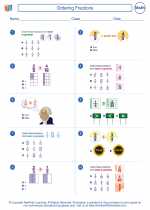Exosphere
The exosphere is the outermost layer of the Earth's atmosphere. It is located above the thermosphere and extends out to space. The exosphere is the thinnest and least dense layer of the atmosphere, and it is where the atmosphere transitions into outer space.
Key Characteristics of the Exosphere:
- Extends from the top of the thermosphere to space
- Consists of very low-density gases, such as hydrogen and helium
- Has extremely low air pressure
- Temperatures can vary widely, from very hot to very cold, due to the sparse gas molecules
- Contains a small number of atmospheric particles, including atoms and molecules that can escape into space
Study Guide:
When studying the exosphere, it's important to understand its key characteristics and its location in the Earth's atmosphere. Here are some key points to focus on:
1. Location
Where is the exosphere located in relation to the other layers of the atmosphere? How does it transition into outer space?
2. Composition
What are the main gases found in the exosphere? Why is the exosphere considered to have very low density?
3. Air Pressure and Temperature
How does the exosphere's air pressure compare to the other layers of the atmosphere? Why do temperatures in the exosphere vary widely?
4. Escape of Atmospheric Particles
Why is the exosphere important for understanding the escape of atmospheric particles into space? What types of particles can be found in the exosphere?
5. Real-World Impact
What are some real-world implications of the exosphere? How does it relate to space exploration and satellite technology?
.◂Math Worksheets and Study Guides Sixth Grade. Ordering Fractions

 Worksheet/Answer key
Worksheet/Answer key
 Worksheet/Answer key
Worksheet/Answer key
 Worksheet/Answer key
Worksheet/Answer key
 Worksheet/Answer key
Worksheet/Answer key
 Worksheet/Answer key
Worksheet/Answer key
 Worksheet/Answer key
Worksheet/Answer key
